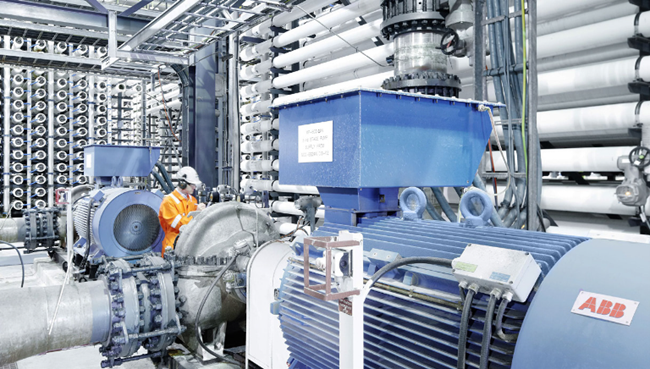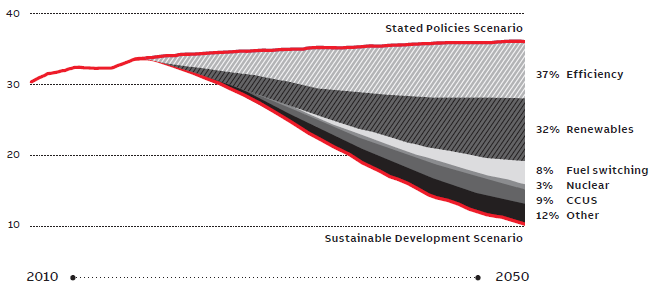Electric motor-driven systems (such as compressors, refrigeration systems, conveyors, and pumps) account for 45 % of global energy consumption. While only 0.03 % of electric motors are classified as large motors (drawing more than 375 kW), they are responsible for 23 % of all electricity consumed by motors worldwide, representing 10.4 % of total global electricity use.1
These large industrial motors are predominantly used in sectors such as chemical processing, air separation, oil and gas, energy, water and wastewater, metals and mining, and pulp and paper. Their primary applications include compressors (32 %), mechanical movement (30 %), pumps (19 %), and fans (19 %).1
A Step Toward Greater Efficiency
As the global demand for more sustainable and environmentally responsible energy solutions grows, improving the energy efficiency of electric motors becomes a crucial initiative.
However, current international energy efficiency standards only apply to motors up to 1000 kW. Even with upcoming regulations extending that coverage to 2000 kW, motors above this threshold will remain unregulated despite their substantial energy impact.
Although these large motors are officially classified as “efficient,” their performance can still be enhanced by one to three efficiency classes simply by choosing the most efficient solutions. The potential reductions in energy use and CO2 emissions from these improvements are significant.
There are multiple ways to reduce the energy consumed by motors in operation. Operators should be equipped to:
- Accurately monitor energy usage across all motors and processes
- Select the appropriate motor type (fixed-speed or variable-speed) based on operational needs
- Optimize the performance of the entire system rather than focusing on individual components
Improving the energy efficiency of industrial motors is one of the most impactful actions organizations can take to reduce overall energy consumption.
Fortunately, the technology required to make this shift is readily available. Proven solutions (such as high-efficiency motors and variable-speed drives) have already been tested and deployed across various industries. Accelerating the adoption of these technologies presents an immediate and practical opportunity for large-scale energy savings.2

Large industrial motor applications. Image Credit: ABB Motors and Drives North America

Image Credit: ABB Motors and Drives North America
Sustainability Through Energy Efficiency
According to the International Energy Agency (IEA), improving energy efficiency could account for over 37 % of the greenhouse gas emission reductions needed by 2050 to meet global climate targets and align with the Paris Agreement.
In the industrial sector, the greatest potential for lowering electricity consumption and related emissions lies in increasing the efficiency of electric motors and end-use equipment (such as pumps and fans) as well as implementing more effective system and process control strategies.4

The percentage of greenhouse gas reductions achievable by sector in meeting the Paris Agreement goals. Image Credit: IEA Energy Outlook 20193
The Use Phase and Energy Efficiency
From a sustainability perspective, it's essential to consider the full CO2 footprint of a product, covering production, the use phase, and end-of-life treatment. A Swedish academic study found that for a 20 MW motor drive package, approximately 99 % of total CO2 emissions occur during the use phase.
Given that large motors typically operate for 20 to 25 years, improving efficiency during this stage is critically important. The larger the motor, the more energy it consumes during operation.
In regions where electricity generation has a higher CO2 intensity, the use phase has an even greater environmental impact. For instance, in Australia, use-phase emissions are 25 times higher than in Sweden, accounting for 99.95 % of the total lifecycle emissions. This suggests that energy efficiency is the dominant factor when evaluating the sustainability of electric motors and drives.5
Additional research from the Mistra-REES initiative supports these findings. In the context of sustainable manufacturing and circular business models, too much attention is often placed on end-of-life strategies. For active products like electric motors, greater focus should be placed on the use phase.
By ensuring high efficiency and extending product lifespans through thoughtful design and proactive maintenance, it becomes easier to create incentives for adoption, ultimately lowering resource consumption and environmental impact.

CO2 emissions in tonnes over the lifecycle of a 20 MW motor drive package5. Image Credit: ABB Motors and Drives North America

This information has been sourced, reviewed, and adapted from materials provided by ABB Motors and Drives North America.
For more information on this source, please visit ABB Motors and Drives North America.